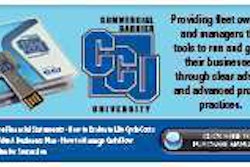Standard of the world
You can thank Cadillac for replacement parts
 [email protected]
[email protected]A couple of months ago, I passed a milestone of sorts: Without going into too much detail, let’s just say that I now officially am “middle-aged,” no matter how much I may dislike – or protest – that fact. Around this time, I was talking cars with an old friend, and he asked me what car I would buy today if money were no object. My immediate answer: Cadillac’s CTS-V sports coupe.
That answer was revealing in its own way: For the first time since about 1970 or so, I didn’t automatically respond to the question by saying “Corvette.” I guess I really am getting old: I do love Corvettes and always will, but these days they seem a tad impractical for running around town – whereas the CTS-V has a high-output ’Vette engine under the hood, and a usable backseat to boot!
Cadillac has done a fine job of turning itself around over the past couple of decades. Remember, this was a brand that largely had lost its way by the late 1970s. Today, Cadillac models easily hold their own against competition from around that globe and serve as a reminder that Americans pioneered automotive engineering and still can build great mass-produced cars when they put their minds to it.
Cadillac has been hailed as “the standard of the world” since 1908, and that wasn’t just good marketing at work. The company earned the title and paved a technology path that directly affects every car owner and truck fleet on the planet on a daily basis: replacement parts.
A well-organized shop can save a fleet big bucks.
In this age of mass production, it can be hard to believe that for most of human history, goods were one-off examples laboriously crafted by hand. A few forward-thinkers – including Thomas Jefferson – recognized that interchangeable components would revolutionize manufacturing processes and dramatically accelerate technological progress. But it wasn’t until 1908 at the Brooklands racetrack outside of London that the concept became reality.
Three Cadillac Model K roadsters (looking more like golf carts than cars to our modern eyes) were driven 25 miles to the track and then completely disassembled. Each car consisted of 720 individual parts, which were all placed in one big pile on a garage floor. The mechanics on hand began reassembling them using whatever part they happened to come across in the pile. Apparently, the mechanics took the challenge seriously: Although we don’t know the color of the cars, onlookers at the time reported the reassembled vehicles had a “harlequin” look, sporting different-colored doors, hoods and trunks.
This was a big deal. A number of engineering experts at the time predicted utter failure for the experiment. But once they hit the road, the three Model Ks were driven another 500 miles – a hugely impressive distance at the time – without any parts-related failures, and Cadillac won an array of prestigious honors for the achievement.
Funny to think that, 103 years later, most readers of CCJ consider replacement parts a huge – and costly – headache. If you’re like most fleet managers, you’re waiting on the day you announce your pending retirement to tell the guys in the shop they have to rearrange and modernize your parts room. In fact, fleet management consultant Darry Stuart, who I interviewed for a story on parts earlier this year, says most parts shops he sees are so far gone that he recommends completely gutting them and starting over from scratch – words no fleet manager (or technician) wants to hear. But bear in mind that you can be looking at tens – or even hundreds – of thousands of dollars in bottom-line savings if you get that shop squared away and develop a comprehensive and proactive parts strategy for your business.
Getting your parts situation under control may not be pleasant, but it can save you serious money. Besides, think how tough your job would be if your guys on the shop floor had to root through one huge pile of parts to find the right one. In some of Stuart’s far-gone shops, that far-fetched comparison may not be too far off the mark.
JACK ROBERTS is Executive Editor of Commercial Carrier Journal. E-mail [email protected] or call (205) 248-1358.











